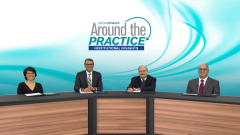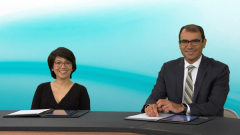
Consolidation and Maintenance Therapy in Transplant-Eligible NDMM
A brief discussion on the use of consolidation therapy to improve patient outcomes following transplant in newly diagnosed multiple myeloma.
Episodes in this series

Transcript:
Alfred Garfall, MD:Let’s talk a little about post-transplant therapy. The DETERMINATION study included a course of lenalidomide, bortezomib, and dexamethasone, consolidated after autologous stem cell transplant. At the same time, we talked about this patient enrolled on a clinical trial that randomized him to go directly after transplant to daratumumab-lenalidomide maintenance vs standard lenalidomide maintenance. Dr Stadtmauer, you led a clinical trial that tested consolidation with triple consolidation after transplant. Can you tell us how we should think about consolidation and maintenance in viewing all these data?
Edward Stadtmauer, MD: In many ways, given that the initial therapy and stem cell transplant do not seem to be curative for that group of patients, post-transplant therapy—maintenance therapy, consolidation—is the major area of our investigation and consideration. It makes sense that more is better and that giving some extra consolidation might lead to longer durations of remission. Through the NIH [National Institutes of Health]–sponsored Bone Marrow Transplant Clinical Trials Network, a large study, we asked the question of whether giving VRd [bortezomib, lenalidomide, dexamethasone] consolidation prior to lenalidomide maintenance therapy would be helpful in this group of patients. In our study, there wasn’t a significant benefit to consolidation.
In some other studies, particularly European studies, there’s a suggestion of benefit. But those studies primarily used medications in the consolidation that were different from the ones used in the initial therapy. It was probably the addition of different medicines. The standard of care right now is lenalidomide maintenance therapy. There are so much data to show both duration of remissions and survival advantage to lenalidomide maintenance therapy after autologous [stem cell] transplant. Is adding something to that better? The study that this patient was enrolled in is asking if the addition of daratumumab to that base is going to be helpful. That’s a very reasonable and an interesting question, but it’s an unknown answer.
Alfred Garfall, MD:That’s a very exciting study, and a large study, that fortunately is accruing well throughout the country. We’re excited to start seeing some results from that.
Transcript edited for clarity.
Newsletter
Stay up to date on recent advances in the multidisciplinary approach to cancer.



































































































